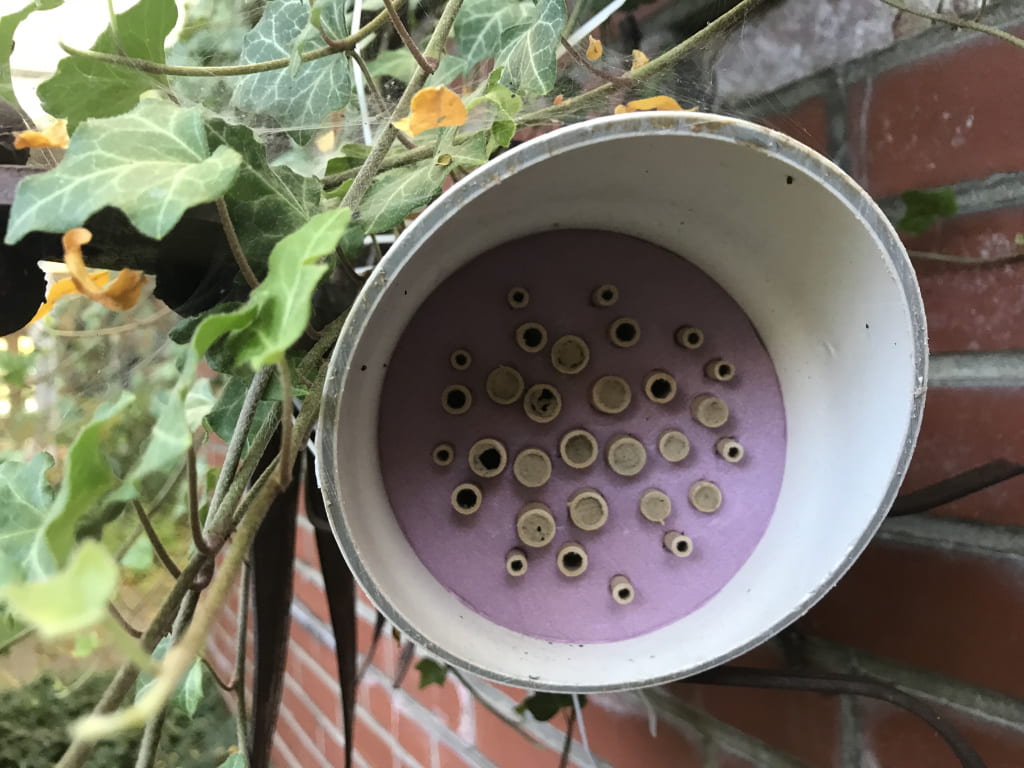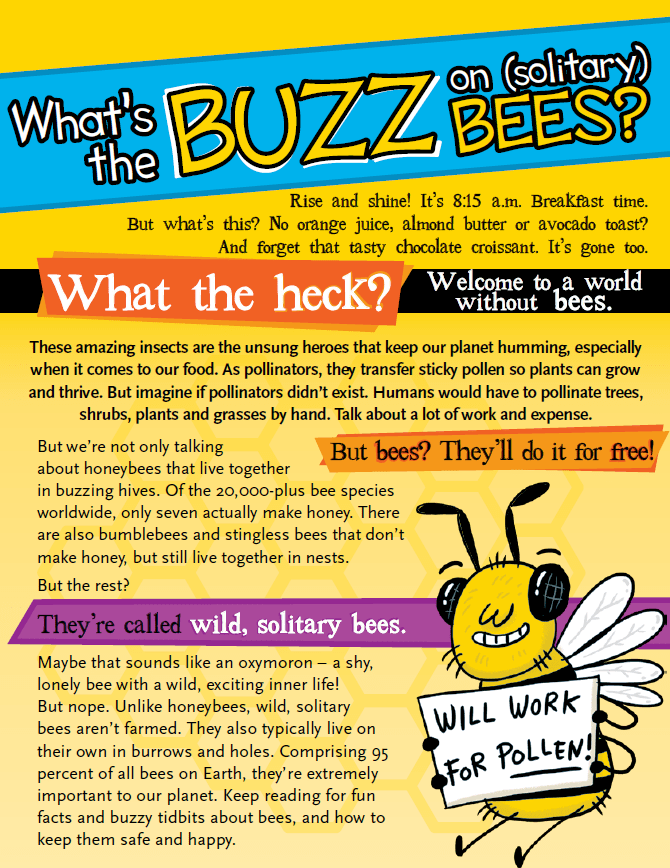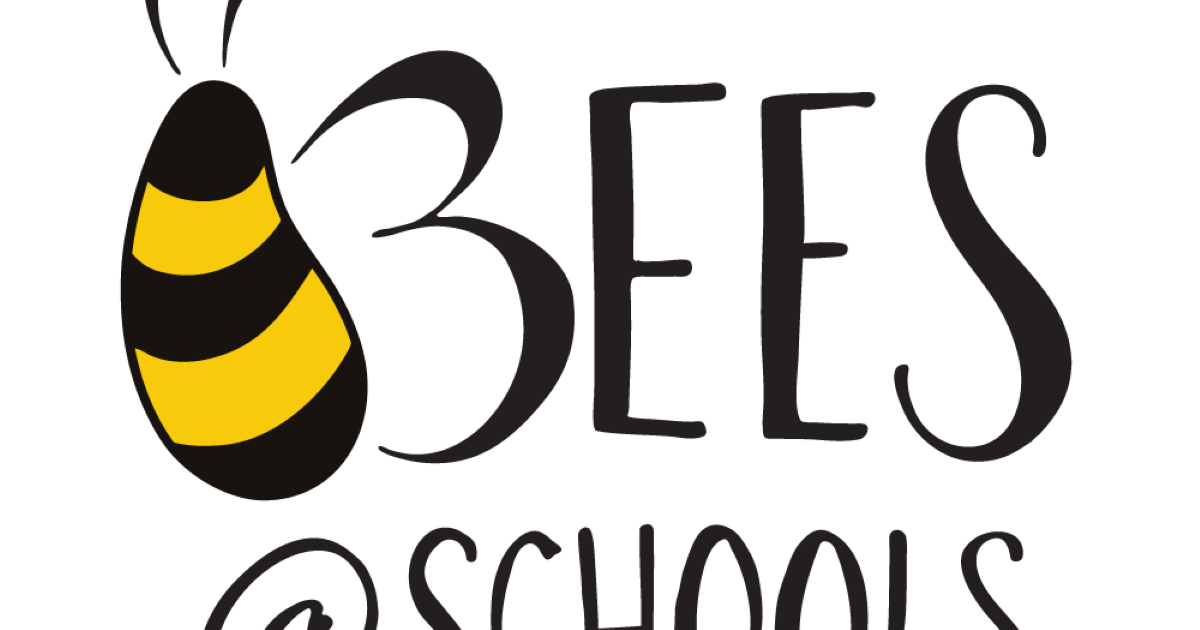By Hayley Brackenridge
Bees are an integral component of human well-being through the maintenance of ecosystem functions, crop production, and as inspiration for arts, technology, and education (Potts et al. 2016). The most common type of bees are wild solitary bees, which comprise 95% of bee species (Pindar et al. 2017). Wild solitary bees do not colonize, but rather nest independently in burrows of leaves, twigs, or mud. Wild solitary bees, among other pollinators, face numerous threats, including change in land-use and management, invasive species, pesticides, and climate change (Potts et al. 2016).



Examples of solitary bees. Left: Carpenter bee (Ceratina sp.) on a flower. Centre: Leaf-cutting bee (Megachile sp.) cutting out a leaf to build a nest. Right: Mason bee (Osmia sp.) on a flower. Photo credit: Bees@Schools.
To understand the effect of local landscape on wild solitary bees, University of Guelph graduate student Sage Handler has enlisted the help of elementary and high schools across what is currently known as Canada. Through the Bees@Schools program, volunteer teachers and students receive human-made nests, called bee hotels, which they install in the spring and maintain all summer before sending back to Handler at the University of Guelph. Handler then uses DNA metabarcoding to identify the hotel occupants and their food sources. The research will “give us a much better idea of where these previously-understudied solitary bees are, what they are eating, and how they are interacting with their environment”, says Handler. This project, more broadly, is part of Dr. Dirk Steinke’s Food from Thought program, which focuses on multiple ways of advancing biodiversity monitoring in agricultural landscapes and agri-food systems.

In addition to the 200 schools involved in this project, Handler has been collaborating with Waterloo Region District Schoolboard’s outdoor education specialist, Allan Woodhouse, who joined GIER’s arts-based knowledge mobilization project to provide expertise in curriculum development and environmental education. The team also included accomplished and award-winning author, Kira Vermond, who has published over 1,500 articles and four books for children and teens, and who brought her unique, witty and fun writing style to ensure Handler’s research reaches its intended audience.
The trio drew upon their individual expertise to create an engaging educational pamphlet communicating the importance of wild solitary bees, the Bees@Schools program, and engaging collaborations between academia and society through citizen science. The pamphlet provides information targeted towards the grade 6 curriculum, as guided by Woodhouse. This unique arts-based knowledge mobilization piece was perfected by the addition of custom illustrations by Clayton Hanmer, whose energetic comic style has been showcased across a broad range of outlets, from The New York Times to National Geographic Kids.
The educational material co-produced by Handler, Woodhouse, Vermond, and Clayton will be distributed to the schools involved in the program to ensure students realize the value of their research contributions and learn to appreciate the value of biodiversity for human wellbeing.

“Interdisciplinary collaboration allows team members to contribute their unique abilities while leaning on each other for support for tasks outside of their skillset”
Sage Handler
Environmental Science is naturally an interdisciplinary field, according to Handler, as the goal is often for results to be applicable for agriculture, environmental conservation, or other industries, but this experience expanded her view of the value of interdisciplinary work. Handler acknowledges that being an expert in a field of research can make people “blind to other things out there and ways to communicate” but by working in an interdisciplinary team, “the blinders can be lifted so the project can really be heightened”. Interdisciplinary collaboration allows team members to contribute their unique abilities while leaning on each other for support for tasks outside of their skillset. Handler recognizes this requires personal reflection of one’s own strengths and weaknesses. She says, “You have to be able to admit when you are not strong in a certain area and delegate to someone else.” The experience of working with Woodhouse and Vermond taught Handler valuable skills for effective teamwork that she will draw upon as she seeks interdisciplinary collaborations for knowledge translation in the future.




Team members (from left to right): Sage Handler, Kira Vermond, Allan Woodhouse (photo credit: Wildlife photography), and Clayton Hanmer.
Banner photo credit: Bees@Schools.
References:
- Pindar, A., E.K. Mullen, M.B. Tonge, E. Guzman-Novoa, N.E. Raine. 2017. Status and Trends of Pollinator Health in Ontario. University of Guelph report prepared for Ontario Ministry of Agriculture, Food and Rural Affairs (OMAFRA). 238 pages.
- Potts, S.G., V. Imperatriz-Fonseca, H.T. Ngo, M.A. Aizen, J.C. Biesmeijer, T.D. Breeze, L.V. Dicks, L.A. Garibaldi, R. Hill, J. Settele, and A.J. Vanbergen. 2016. Safeguarding pollinators and their values to human well-being. Nature. 540(7632):220-229.



